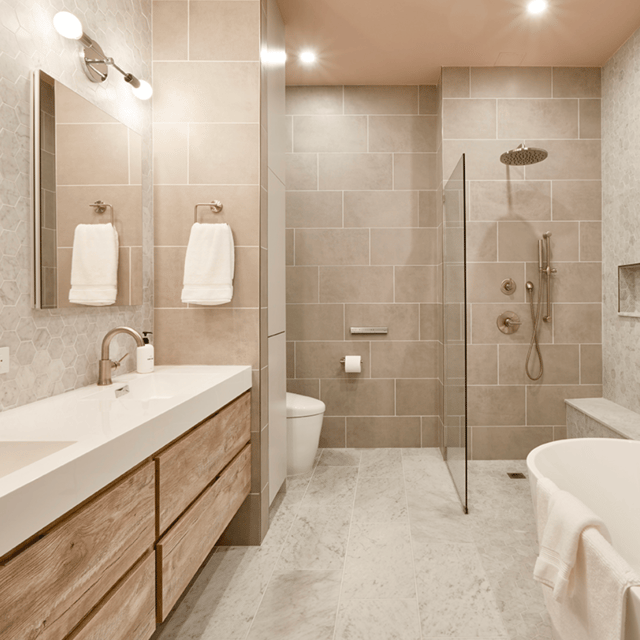
Bathroom
New York City Bathroom Remodels: Planning & Renovation Tips
12.05.2025

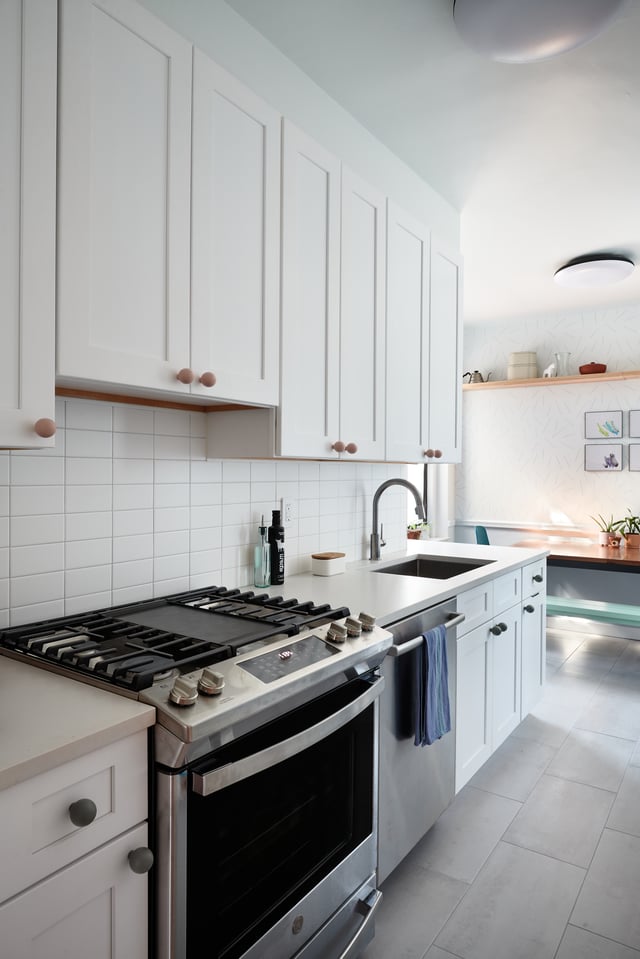
In This Article
Thinking of giving your kitchen a major facelift? Whether it's outdated cabinets, lackluster countertops, or just a layout that doesn't work, remodeling your kitchen can breathe new life into your home. But before you grab that sledgehammer, it's crucial to have a game plan in place. This guide will walk you through the first steps to kick off your kitchen remodel smoothly and efficiently.
|
In This Article: Start by evaluating your kitchen Set a budget for your kitchen renovation Source materials and appliances |
Before you jump into picking out new countertops or appliances, take a step back and assess your current kitchen. This evaluation will be the foundation of your entire remodel, helping you figure out what needs to change and what can stay. It's all about understanding how your kitchen works for you—or doesn't—so you can set realistic goals for your renovation.
Before you dive into a kitchen remodel, take the time to thoroughly assess your current space. What's working for you, and what's not? Maybe your cabinets don't have enough storage, or your appliances are more suited to a history museum than a modern kitchen. Consider the flow of the space, too—are you constantly bumping into countertops or family members? Write down the key pain points, as well as the features you actually enjoy.
Think about your kitchen's daily functions. Do you love to cook elaborate meals, or are you more of a quick-and-easy chef? Understanding your needs and how you use the space is the first step in ensuring the remodel will actually make your life easier. Don't forget to consider future needs too—if you plan to entertain more often or if your family is growing, that could influence your choices.
Once you've pinpointed what's lacking in your current kitchen, it's time to establish clear goals for your remodel. Ask yourself: What's the main driver behind this renovation? Are you primarily focused on giving the space a fresh, updated look? Or is it all about adding functionality, like better storage solutions or modern appliances?
Maybe your kitchen feels cramped, and you dream of an open-concept layout that flows seamlessly into the dining area. On the other hand, you might simply want to optimize the existing space to make it more efficient and enjoyable. Being crystal clear about your main priorities will help you make decisions throughout the process—whether it's choosing between splurging on marble countertops or investing in smart storage solutions.
Having a clear vision will not only guide your design choices but also help prevent budget overruns by keeping you focused on what truly matters.
Once you've mapped out your dream kitchen, it's time to get real about the costs. Renovations can be exciting, but the expenses can add up quickly if you're not careful. Setting a clear budget upfront is essential to keep your remodel from spiraling out of control. Let's break down how to create a budget that works for you.
First things first: know what you're getting into. Kitchen remodels can range from a modest refresh to a full-on overhaul, and prices will vary depending on the scope of your project. Are you just updating the cabinets and countertops, or are you ripping out the floors and moving walls? As a rough guide, a mid-range kitchen remodel can set you back anywhere from $20,000 to $50,000, while a high-end renovation can easily exceed $75,000.
Labor costs, materials, and appliances are your big-ticket items. Cabinets alone can take up to 30% of your budget, while new appliances might eat up another 15%. Don't forget about the smaller details like hardware, lighting, and paint, which can add up quicker than you'd expect. The key is to research prices and get quotes so you know what to expect.
Once you have a handle on potential costs, it's time to set a budget plan. Start with a realistic number you're comfortable spending—one that won't have you eating ramen noodles for the next year. Break it down into categories: design fees, permits, materials, labor, and those "nice-to-haves" like that fancy wine fridge or top-of-the-line range.
Prioritize what matters most to you. Is it the sleek countertops that catch your eye, or do you need better storage solutions? Being clear about your must-haves versus nice-to-haves will help you allocate your funds wisely. And don't forget to factor in taxes and delivery fees—those little extras can sneak up on you.
Even the best-laid plans can hit a snag. Maybe the plumber finds old pipes that need replacing, or you discover a hidden mold problem behind that old backsplash. That's why it's crucial to build a buffer into your budget. Experts recommend setting aside at least 10-15% of your total budget for unexpected costs.
Think of this buffer as your safety net—without it, a surprise expense could derail your entire project. And let's be honest, almost every remodel has its share of surprises. So, if your budget is $30,000, aim to have an extra $3,000 to $4,500 set aside just in case. If you don't end up needing it, great! That's money you can use for those finishing touches or a celebratory dinner once your dream kitchen is complete.
By taking the time to understand costs, create a realistic budget plan, and build in some wiggle room, you'll set yourself up for a smoother renovation journey. Because let's face it, no one wants to end up with a half-finished kitchen because the budget ran dry halfway through.
Now that you've nailed down your budget, it's time to dive into the fun part—designing your dream kitchen. Whether you're aiming for a sleek, modern vibe or a cozy, rustic feel, having a clear design plan is crucial to making your vision a reality. Let's break down the key elements to consider as you plan your perfect space.
Before you get carried away picking out color schemes and backsplashes, it's essential to figure out the right layout for your kitchen. The layout determines how everything flows—how easy it is to move from the stove to the sink or from the fridge to the prep area. If you're wondering where to start, consider the classic "kitchen triangle" rule: ideally, the stove, sink, and fridge should form a triangle to make cooking more efficient.
There are several popular layouts to choose from:
Think about your lifestyle and how you use your kitchen. Do you need more counter space for baking, or are you more interested in a spacious island where the kids can do homework while you cook?
If the thought of juggling design details, measurements, and finishes has your head spinning, it might be worth working with a designer. A professional designer can help you maximize your space and avoid costly mistakes. They can also bring fresh ideas to the table—things you might not have thought of, like hidden storage solutions or unique lighting options.
But let's be real; designers don't come cheap. If you're on a tight budget, consider a hybrid approach. Some designers offer consulting services where they help you refine your ideas, but you handle the rest. And if you're a DIY enthusiast with a clear vision, there are plenty of online design tools that can help you visualize your new kitchen without breaking the bank.
When it comes to designing a kitchen, beauty is important, but functionality is key. After all, it's not just about how your kitchen looks—it's about how it works. Here are some functional aspects to keep in mind:
The goal is to create a kitchen that not only looks great but also makes your daily routine easier. By balancing aesthetics with functionality, you'll end up with a beautiful and practical space—where you'll actually enjoy spending time, whether you're prepping meals or just sipping your morning coffee.
You've mapped out your dream kitchen, set a budget, and fine-tuned the design. Now comes a less exciting but super important step: securing all the necessary permits and approvals. Trust me, you don't want to skip this part—unless you enjoy surprise fines and project delays. Let's dive into what you need to know to keep everything above board.
Before you swing that first sledgehammer, it's crucial to understand the local regulations for kitchen renovations. Each city or county has its own set of rules, so there's no one-size-fits-all approach. Permits are usually required for anything beyond simple cosmetic updates. If you're moving walls, updating electrical work, changing plumbing, or installing new gas lines, you'll definitely need permits.
Here's why permits matter: they ensure that your remodel meets safety codes, which can protect you from future headaches like faulty wiring or plumbing disasters. Plus, if you plan to sell your home down the road, unpermitted work can complicate the process—or worse, lower your property's value. The last thing you want is for a buyer's inspection to reveal that your shiny new kitchen doesn't meet code.
Your best bet? Call your local building department or check their website to find out exactly what permits you'll need. Your contractor should also be able to help with this process. If they say you don't need permits for structural changes, that's a red flag—time to find a new contractor.
Alright, let's talk timelines. The truth is that getting permits approved can take longer than you might expect. Depending on where you live and the complexity of your project, it could take anywhere from a couple of weeks to a few months. Yep, you heard that right. So, it's a good idea to factor this into your overall project schedule.
The timeline generally looks something like this: first, you (or your contractor) submit your permit applications along with detailed plans of your remodel. Then, the local building department reviews everything to make sure your project complies with zoning laws and building codes. If they have questions or need additional documentation, that can slow things down. Once everything is approved, you'll receive the green light to start your renovation.
Pro tip: Don't schedule your contractor or order custom cabinets until you have those permits in hand. The last thing you want is to pay for materials that sit in your garage while you wait for paperwork to clear.
And don't forget about inspections! During the remodel, inspectors will likely need to check your progress at various stages—especially if you're doing electrical or plumbing work.
In the end, a little patience here goes a long way. By taking the time to secure permits and approvals upfront, you'll save yourself from costly fines, delays, or even having to tear out work that doesn't meet code. So, while it might feel like a hassle, it's a small price to pay for the peace of mind that your new kitchen is both beautiful and built to last.
Now that you've tackled the planning and permit stages, it's time to bring in the experts. Let's face it: a kitchen remodel isn't exactly a DIY weekend project (unless you're Chip and Joanna Gaines). Hiring the right professionals can make all the difference between a smooth renovation and a total nightmare. Here's how to find and hire the best pros for the job.
Finding a good contractor is like dating—you need someone reliable, trustworthy, and willing to listen to your wants. Start by asking friends, family, or neighbors for recommendations. Word of mouth is often the best way to find someone who won't leave you with half-finished cabinets and a mess to clean up.
Once you've got a list of potential contractors, check out their websites and portfolios. Look for projects similar to what you have in mind to see if their style matches your vision. Schedule initial consultations to discuss your project, get estimates, and feel out whether they're someone you'd be comfortable working with. And don't just go for the lowest bid—it could mean shortcuts, and that's the last thing you want when it comes to your dream kitchen.
This is where you need to do your homework. You wouldn't hire a babysitter without checking references, right? The same goes for contractors. Make sure whoever you hire is licensed, bonded, and insured. Ask for proof—don't just take their word for it. Licensing ensures they know their stuff, while insurance protects you in case of accidents on the job.
But it doesn't stop there. Check their reviews online (Google, Yelp, Angie's List) and ask for references from past clients. Call those references to ask about their experience: Was the contractor punctual? Did they stay within budget? How did they handle unexpected issues? These conversations can reveal a lot about what it's really like to work with that contractor.
Another tip: Check to see if they're members of a professional organization, like the National Kitchen & Bath Association (NKBA). While not mandatory, this shows they're serious about their craft and staying current with industry standards.
Once you've found "the one," it's time to make things official—but don't just shake hands and call it a deal. A detailed contract is your best friend in this process. It should cover everything: the project scope, timeline, payment schedule, materials to be used, and how changes will be handled. Having everything in writing protects both you and the contractor, ensuring everyone is on the same page.
Make sure the contract includes a clear payment schedule. Typically, you'll pay a deposit upfront (usually 10-20% of the total cost), with subsequent payments tied to project milestones. Avoid contractors who ask for a large sum upfront—this is often a red flag. And don't forget to include a clause for handling delays or unexpected issues. Renovations rarely go off without a hitch, so it's good to have a plan in place.
Before you sign, take your time to read through the contract thoroughly. If something looks off or you don't understand it, ask questions or consult a lawyer. It's better to clarify things now than deal with costly misunderstandings later.
Ultimately, hiring the right professionals and having a solid contract in place can save you from a lot of headaches. It's the best way to ensure your remodel goes off without a hitch—and that you can actually enjoy that beautiful new kitchen when it's all done.
Now that you've lined up your dream team, it's time to move on to one of the most exciting parts of the renovation process—picking out all the materials and appliances that will bring your new kitchen to life. This is where the fun really begins, but it also requires some careful thought. The right choices here can make your kitchen not only beautiful but also practical and long-lasting.
When it comes to materials, it's tempting to go straight for whatever looks the most stylish. But remember, kitchens are high-traffic areas that take a beating, so durability should be your top priority. Sure, those glossy marble countertops look stunning, but are you prepared for the maintenance? Marble can stain easily, especially if you're a fan of red wine or tomato sauce. Instead, consider options like quartz, which offers a similar upscale look but with far less upkeep.
For cabinets, solid wood or plywood is a more durable option than particleboard. If you're worried about budget, try mixing and matching—splurge on the areas that see the most wear and tear, like the countertops and cabinets, while saving on backsplash tiles or hardware. Flooring is another area where durability matters. Porcelain tile and hardwood are both excellent choices that can handle heavy foot traffic and the occasional dropped pot.
When selecting finishes, consider how they'll hold up over time. Matte surfaces are more forgiving of fingerprints and smudges compared to shiny finishes, which can require constant cleaning. If you have kids or pets, go for scratch-resistant options to keep your kitchen looking fresh.
Next up: appliances. If you're investing in a kitchen remodel, consider energy-efficient appliances. Not only are they better for the environment, but they'll also save you money in the long run. Look for the Energy Star label, which indicates that the appliance meets energy efficiency guidelines set by the U.S. Environmental Protection Agency.
When choosing appliances, don't just focus on how they look—think about functionality, too. A sleek, professional-grade range might look great, but do you really need six burners if you're more of a microwave dinner kind of person? Be realistic about how you cook and use your kitchen. For example, if you do a lot of baking, an oven with convection settings could be worth the investment.
Consider your fridge as well—do you need a large, double-door model, or would a standard-sized one be more efficient for your family? And don't forget about the smaller details, like dishwashers with water-saving features or induction cooktops that use less energy than traditional electric or gas stoves.
Another tip: think about noise levels. If your kitchen is open to the living area, you'll want a whisper-quiet dishwasher so it doesn't drown out conversations during dinner parties or family movie nights.
By carefully selecting durable materials and energy-efficient appliances, you're not just investing in a beautiful kitchen but also in one that's practical, sustainable, and built to last. This thoughtful approach will pay off in lower maintenance costs, energy savings, and, of course, a space you'll love spending time in for years to come.
You've planned, budgeted, and chosen your materials—now it's time to get ready for the big transformation. But before your home turns into a construction zone, there are a few crucial steps to take to ensure the process goes as smoothly as possible. Remodeling your kitchen is exciting, but it can also be disruptive. Here's how to prepare so you can keep your sanity intact during the project.
Honestly, living without a fully functioning kitchen can be a bit of a nightmare, especially if you've got a family to feed. But with a little planning, you can set up a temporary kitchen to get you through the renovation period. Choose a spot in your home—like the dining room, basement, or even a corner of the living room—where you can create a makeshift cooking area.
Stock it with the essentials: a mini-fridge, microwave, toaster oven, and maybe even a portable electric cooktop. Don't forget basics like utensils, a cutting board, and some easy-to-clean dishes. The goal here is to keep life as normal as possible while your main kitchen is out of commission. And let's face it, this might be a great excuse to perfect your slow cooker and Instant Pot recipes!
Pro tip: Plan meals that require little prep or cleanup. Think sandwiches, salads, and one-pot wonders. And don't feel guilty about using takeout or meal delivery services occasionally—after all, this isn't a permanent situation.
A kitchen remodel can be chaotic, with contractors coming and going, tools scattered around, and construction debris piling up. Keeping your home safe should be a top priority, especially if you have kids or pets. Start by sealing off the kitchen area with plastic sheeting or temporary barriers to minimize dust and keep curious little ones out of harm's way.
If you have pets, consider setting up a designated area where they can stay away from the noise and potential hazards. Trust me, you don't want Fluffy stepping on a stray nail or getting spooked by a power drill. And if you're doing any part of the remodel yourself, wear protective gear like goggles, gloves, and sturdy shoes.
It's also wise to keep a fire extinguisher nearby, especially if electrical work is being done. Better safe than sorry! The goal is to make sure everyone stays safe and sound while your dream kitchen comes to life.
The key to a smooth renovation? Communication, communication, communication. Your contractors are the experts, but they're not mind-readers. Establish clear lines of communication from the get-go to avoid misunderstandings. Schedule regular check-ins—whether a quick call, a text, or an in-person meeting—to review progress and address any concerns.
Make sure you're both on the same page regarding the timeline, budget, and any unexpected changes that might come up. The last thing you want is to assume that something's getting done only to find out later that it was overlooked. And if you need clarification on something, feel free to ask questions. This is your kitchen, after all, so you should feel confident in every step of the process.
It's also helpful to set expectations around working hours. If you have a baby napping at noon or need to keep the noise down in the evenings, let your contractors know in advance. A little communication upfront can save a lot of headaches later on.
Prepping for a kitchen remodel involves staying organized, ensuring safety, and keeping the lines of communication open. With a bit of planning, you can survive the chaos—and soon enough, you'll be cooking in your beautiful new kitchen without a single power tool in sight.
Congratulations—you've made it to the heart of your kitchen remodel: the construction phase. This is when all your planning, budgeting, and designing finally take shape. But be warned, it's also the most hectic part of the journey. Let's walk through what to expect during the remodel so you're not caught off guard.
The kitchen remodel process typically happens in several key phases, each with its own challenges and milestones. Here's what you can expect along the way:
Before you pop the champagne, there's one final step you shouldn't skip: a thorough quality check. This is your chance to make sure everything is up to your standards before signing off on the project. Walk through the kitchen with your contractor and look at everything with a critical eye.
Check for things like cabinet doors aligning properly, countertops being smooth and securely attached, and flooring without gaps or uneven spots. Test all your appliances to ensure they're working correctly, and flick on every light switch to confirm the wiring is good. Don't forget to run the faucet and check for any leaks—it's better to catch it now than after the contractors have packed up and left.
If you notice any issues, speak up. A good contractor will be willing to fix things that aren't up to par. This is also when you can request touch-ups on paint or any cosmetic details that might have been overlooked in the hustle of construction. It's much easier to get these things addressed while the crew is still on-site rather than trying to chase them down after they've moved on to another project.
Once everything passes your inspection, it's time to celebrate! The dust has settled, the tools are gone, and your shiny new kitchen is ready to enjoy. After weeks (or months) of living through the chaos, you've earned the right to enjoy a home-cooked meal in your dream kitchen. Cheers to a job well done!
You're almost at the finish line! After all the hard work, your kitchen is finally starting to look like the dream space you envisioned. But before you can fully enjoy it, there are a couple more steps to wrap things up properly. Let's talk about those final touches and making sure everything is truly good to go.
This is where the magic happens—the small details that bring your kitchen to life. Think hardware for your cabinets, that statement light fixture over the island, and those open shelves you've been eyeing on Pinterest. Now's the time to add decor like plants, a few well-placed cookbooks, or even a pop of color with new dish towels. These finishing touches make your kitchen feel less like a construction site and more like home.
Don't forget about practical elements, too. This is a great opportunity to install organizers in your drawers, put liners in your cabinets, and get everything in its place. A little bit of organization now will make your new kitchen even more enjoyable to use.
Before you officially sign off on your project, doing one last inspection is crucial. Walk through your kitchen with your contractor and double-check that everything is done correctly. Look out for any cosmetic imperfections, test the appliances again, and ensure that all plumbing and electrical work is functioning properly.
If you spot any issues, speak up. It's much easier to address problems now while your contractor is still on-site. Once everything meets your standards, you can finally breathe a sigh of relief—it's time to enjoy your brand-new kitchen. Pour yourself a glass of wine, put on some music, and bask in the glow of your beautiful new space!

Written by Jordi Lippe-McGraw
Jordi Lippe-McGraw
How long does a kitchen remodel typically take?
What is the average cost of a kitchen remodel?
Do I need a permit for a kitchen remodel?
How can I stay on budget during my kitchen renovation?
What should I look for in high-quality kitchen materials?
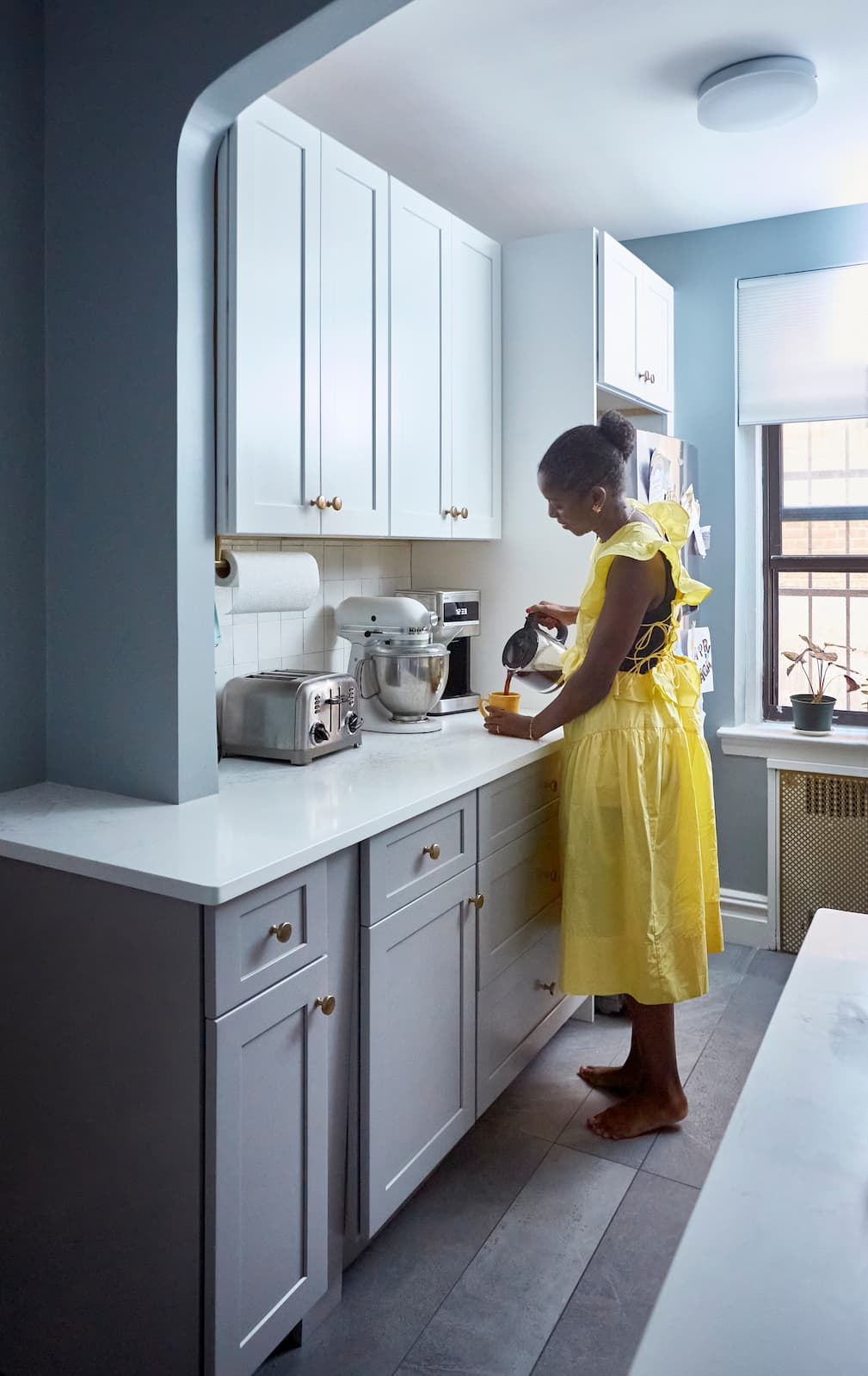
Renovate confidently with Block
Easily compare quotes from top quality contractors, and get peace of mind with warranty & price protections.
Thousands of homeowners have renovated with Block

4.5 Stars (100+)

4.7 Stars (100+)

4.5 Stars (75+)

Bathroom
New York City Bathroom Remodels: Planning & Renovation Tips
12.05.2025

Bathroom
Slanted Roof Bathrooms and Shower Design Ideas
11.22.2025

Bathroom
Choosing Bathroom Fixture Finishes - Inspiration & FAQ
10.22.2025
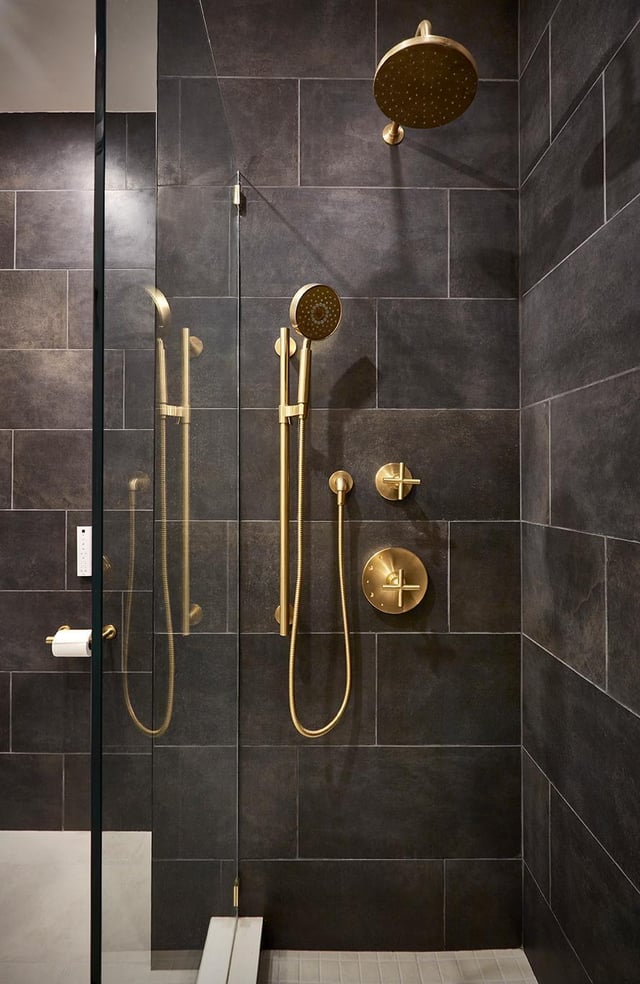
Bathroom
Designing a 40-Square Foot Bathroom? Here’s What Actually Matters
10.22.2025
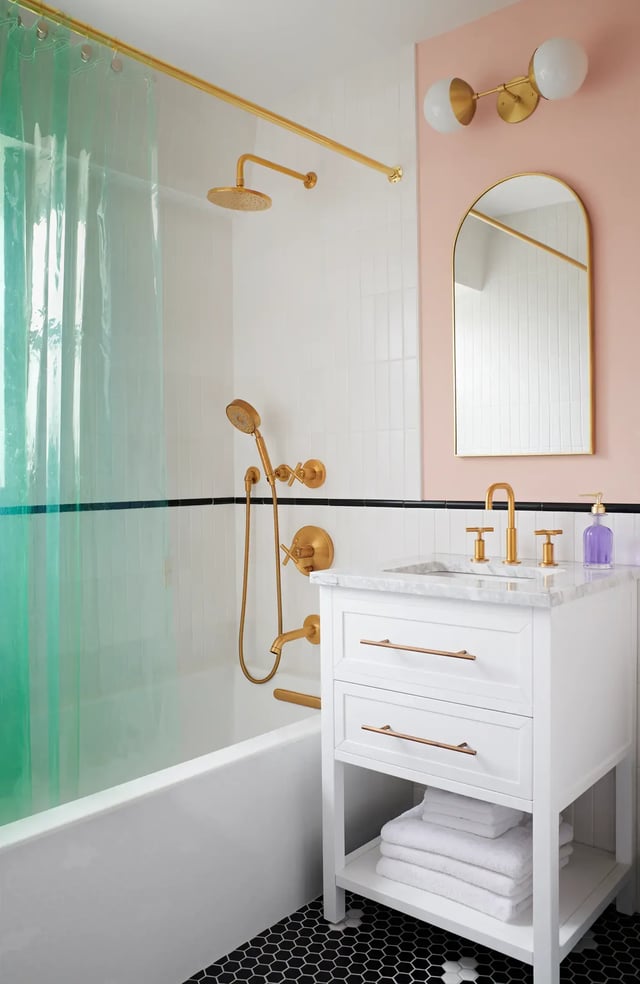
Bathroom
Different Types of Bathroom Sinks
10.22.2025
Renovate confidently